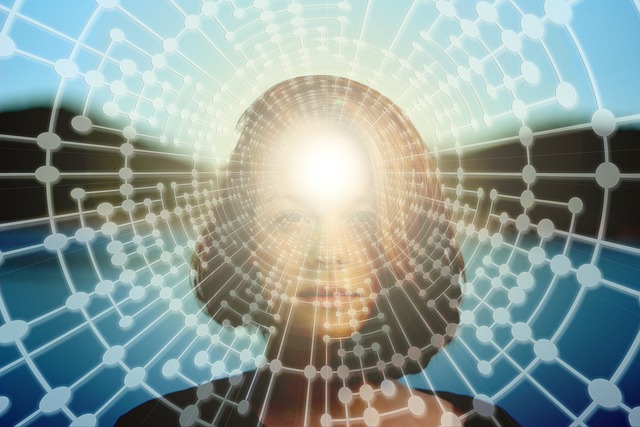
Memories make us who we are. From one day to the next, we acquire new memories and build a directory of facts, events and their associations. With this “memory directory” stored in our brain, we make sense of our surroundings and ourselves: we judge, make decisions, and take calculated behavioral actions. Living independently would be extremely challenging without the ability to remember everything we learned and acquired in our lives. As we age, activating previously formed memories often becomes difficult and hinders our ability to make correct sense of phenomena in our environment. There are various diseases, including Alzheimer's, that cause the disconnection of brain circuits, which erases or makes it difficult to access our memories. Which has a devastating effect on patients, since they lose the ability to recognize who they are and their relationships with others.
Brain circuits organize memories for sets of skills and outcomes of actions that allow us to perform tasks. Specific brain circuits are dedicated to pattern separation and completion to distinguish between similarities and differences to judge, make decisions, and execute the appropriate action. Even for a simple task, like putting food on a plate and a fork in our hand, the brain allows us to correctly use the fork to pick up the food and put it in our mouth. When we forget something, like a car key, we look for clues to trigger the recovery of that memory. Alteration of brain circuits makes performing simple tasks incredibly difficult.
Brain circuits are made up of different types of cells, such as neurons and glia. The human brain has approximately 80 billion neurons, each of which makes up to 1,000 connections with other neurons. Each neuron has axons and dendrites. Axons have small protrusions called boutons that contain vesicles loaded with neurotransmitters. These are released when neurons are excited to generate an action potential, an information currency of the brain. Neurotransmitters released into the extracellular space bind to receptors and channels on small protrusions called spines located on the dendrites of other neurons. In this way, information is transmitted from one neuron to the next.
In order to study the role of the dentate gyrus (DG) of the hippocampus, a brain region crucial for various learning and memory processes, in memory we have used classical conditioning of the corneal reflex. This simple model of associative learning is widely used for the study of how neural circuits make learning and memory possible. The training consists of the presentation of a brief sound as a conditioned stimulus, at the end of which a puff of air is presented to the cornea. After several sessions of pairing both stimuli, the experimental subject responds to the sound by closing his eyelids.
To investigate the role of the dentate gyrus (DG) of the hippocampus, a simple form of classical conditioning has been used in our different studies: the corneal reflex. Animals were presented with an unconditioned stimulus (US) to the eye to elicit a blink, followed by a conditioned stimulus (CS), such as a tone (brief sound). After several days of conditioning with both stimuli, the experimental subject responds to the sound by closing the eyelids. In a previous study carried out by Prof. José M. Delgado García and his colleagues from the Department of Neurosciences at the Pablo de Olavide University, it was possible to demonstrate that the memory acquired through learning could be erased if the activity of the DG neurons in the brain was inactivated. The conclusion was that the GD has to be active at the time when trying to reactivate a specific memory.
In a recent study, led by the group of Prof. Mazahir T. Hasan, Ikerbasque researcher at the Achucarro Center for Neuroscience of the Basque Country (Laboratory of Brain Circuits Therapeutics) and the group of Prof. José M. Delgado García of the Pablo de Olavide University from Sevilla, and published in the prestigious journal Molecular Psychiatry, the researchers selectively blocked the functional activity of GD. With this selective manipulation, they discovered that, although the learned memories disappeared during the time in which the DG was inactivated, they reappeared once the functional activity of the DG was recovered. The researchers concluded that the GD is necessary for the activation of already acquired memories and/or for their recovery.
To reconcile the discrepancy between the two studies, the researchers postulated that, in the previous study, GD silencing used a genetic technology that hyperpolarized neurons, interfering with both anterograde and retrograde synaptic signaling. Therefore, the memory engram from the entorhinal cortex (EC) to GD and also from GD to the CA3 region of the hippocampus was silenced, which erased the EC-GD and GD-CA3 memory engrams. In the current study, the researchers selectively deleted the GD-CA3 engram by silencing GD output. After activating silencing, the intact CE-GD engram was reprinted to restore the GD-CA3 engram for memory retrieval.
On the one hand, the technology used in the above study offers interesting possibilities for eradicating a memory engram from a previous learning experience, with prospects of potentially treating bad memories. On the other hand, in the current study, the technology developed by Prof. Mazahir T. Hasan establishes the crucial role of the GD in memory retrieval and provides deeper insight into the proposed mechanisms to sequentially imprint memory engrams from a region to the next.
By understanding how forgetting and remembering circuits work, novel strategies could be developed to treat various memory dysfunctions, such as those related to aging, post-traumatic stress disorder, and Alzheimer's disease.
Bibliographic reference
Carretero-Guillén A, Treviño M, Gómez-Climent MÁ, Dogbevia GK, Bertocchi I, Sprengel R, Larkum ME, Vlachos A, Gruart A, Delgado-García JM, Hasan MT. “Dentate gyrus is needed for memory retrieval.” Molecular Psychiatry. 2024 Apr 12. doi: 10.1038/s41380-024-02546-0.
https://pubmed.ncbi.nlm.nih.gov/38609585/
.png)
